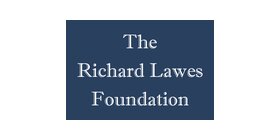Report Synopsis
How can retail and supply chains support demand for more sustainable aquaculture feed?
Background
A constraint to the potential growth and long-term sustainability of global aquaculture in the coming decades, is the availability and sustainability of aquafeed (Naylor et al., 2021). Aquafeed ingredients may account for up to 90% of the environmental impacts and carbon footprint of farmed fish production (Little et al., 2018). In the last few years, many UK retailers and seafood companies have set ambitious carbon emissions targets as well as having broad responsible sourcing policies which include seafood. Scottish Salmon is the UK’s largest food export and a popular domestic product (Seafish, 2021). In addition, UK consumers enjoy a range of imported farmed fish species e.g., farmed prawns, seabass and pangasius. These species rely on feed made up of a range of globally sourced ingredients which contributes to the carbon and environmental footprint of the product.
This project aimed to explore the environmental impacts of traditional and ‘alternative’ aquafeed ingredients and identify opportunities for retailers and seafood supply chains to support more sustainable feed ingredient production and use.
Methods
As part of the Nuffield study tour, six countries were visited: Brazil, Norway, Singapore, Thailand, USA and the UK. Visits and meetings were carried out with a range of aquaculture feed stakeholders including feed ingredient producers, feed manufacturers, fish farmers, researchers, seafood processors, seafood companies and retailers; a sample also participated in in-depth interviews.
Results
Through the study tour, examples of aquaculture feed sustainability initiatives were observed which may mitigate some of the environmental impacts of aquaculture feed production. Aquafeed data collection and certification was largely focused on ‘known risks’ i.e., environmental impacts of marine ingredients and soy. Stakeholders suggested that feed companies are currently leading work on feed sustainability. Limitations to working more on feed sustainability was largely lack of information and data regarding feed production and sustainability challenges. Finding sustainable alternative ingredients was agreed to be the main priority for future aquafeed sustainability.
Discussion and conclusions
Retailers and suppliers can support more sustainable aquaculture feed through:
• Managing risks e.g., using data and certification; responsible sourcing policies
• Supporting improvement efforts e.g., supply chain engagement, advocacy, and investment
Although there are existing data and certification tools available to the supply chain, supply chains should advocate for improved traceability and transparency of feed ingredients to allow better understanding of feed ingredient production and associated environmental and social risks.
An opportunity to support best practice and drive sustainability could be the creation of an independent holistic risk assessment tools focused on feed ingredients and in a format readily accessible to non-feed experts. More clear and consistent asks from aquaculture supply chains could encourage feed companies to prioritise feed sustainability when formulating feed. Collaboratively addressing responsible sourcing of aquaculture feed ingredients could support the long-term sustainability and availability of feed ingredients for the aquaculture sector.
Aisla Jones

The Richard Lawes Foundation

Similar Reports
- 2023
A Perspective on Global Salmon Aquaculture: Empowering Ecosystems and Communities
Joana Ferreira Mendes - 2022
Insights for the emerging seaweed industry in Australia
Jo Kelly - 2018
Fishers should be encouraged to collect data. Lots of it! Using tablet-based technologies to collect data in commercial and recreational fisheries
Tom Robinson - 2018
Competitiveness of Brazilian Tilapia Farming
Mauro Nakata
